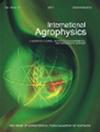选定木质纤维素原料的物理和热改性
IF 1.7
4区 农林科学
Q2 AGRONOMY
引用次数: 0
摘要
本文讨论了L/D=12对TS-45单螺杆挤出机(ZMCh Metalchem,Gliwice,Poland)塑化系统的改性影响。改造涉及挤压机螺杆的重新配置,以实现木质纤维素原料的某些选定物理特性,而这些原料在沼气设施中并不常用。将切碎的木质纤维素原料(玉米秸秆、小麦秸秆和干草)润湿以达到25%的含水量,并在挤出机螺杆的三个转速下挤出:70、90和110rpm。在挤压蒸煮过程中,测定了工艺效率和能量强度。对所获得的挤出物进行研究,以确定所选择的物理性质(水溶性指数、吸水性指数和堆积密度)。此外,该研究还包括对微观图像以及每新鲜质量、干质量和干有机质量的累积甲烷和沼气生产效率的分析。此外,对所研究的挤出样品的FTIR红外光谱进行了分析,这些样品含有木质纤维素结构,并揭示了分子水平上的明显变化。使用挤压技术作为植物生物质的预处理,可以打破木质纤维素的结合,从而疏松材料的结构,从而改变其物理性质和沼气效率。本文章由计算机程序翻译,如有差异,请以英文原文为准。
Physical and thermal modification of selected lignocellulosic raw materials
. The impact of the modification of the plasticizing system of the TS-45 single-screw extruder (by ZMCh Metalchem, Gliwice, Poland) with L/D = 12 is discussed in the article. The modification involved the reconfiguration of the extruder screw to achieve certain selected physical characteristics of the lignocellulosic raw materials which are not commonly used in biogas facilities. Shredded lignocellulosic raw materials (corn straw, wheat straw, and hay) were moistened to achieve a 25% water content and extruded at three rotational speeds of the extruder screw: 70, 90, and 110 rpm. During extrusion-cooking, the process efficiency and energy intensity were determined. The obtained extrudates were studied in order to establish selected physical properties (water solubility index, water absorption index and bulk density). In addition, the research included an analysis of microscopic images and the efficiency of cumulative methane and biogas production per fresh mass, dry mass, and dry organic mass. In addition, an analysis of the FTIR infrared spectra of the studied extruded samples was performed, these contained lignocellulose structures, and revealed explicit changes at the molecular level. The use of the extrusion technique as a pretreatment of the plant biomass allowed for the lignocellulosic bonds to be broken, which loosened the structure of the material and thus changed its physical properties and biogas efficiency.
求助全文
通过发布文献求助,成功后即可免费获取论文全文。
去求助
来源期刊

International Agrophysics
农林科学-农艺学
CiteScore
3.60
自引率
9.10%
发文量
27
审稿时长
3 months
期刊介绍:
The journal is focused on the soil-plant-atmosphere system. The journal publishes original research and review papers on any subject regarding soil, plant and atmosphere and the interface in between. Manuscripts on postharvest processing and quality of crops are also welcomed.
Particularly the journal is focused on the following areas:
implications of agricultural land use, soil management and climate change on production of biomass and renewable energy, soil structure, cycling of carbon, water, heat and nutrients, biota, greenhouse gases and environment,
soil-plant-atmosphere continuum and ways of its regulation to increase efficiency of water, energy and chemicals in agriculture,
postharvest management and processing of agricultural and horticultural products in relation to food quality and safety,
mathematical modeling of physical processes affecting environment quality, plant production and postharvest processing,
advances in sensors and communication devices to measure and collect information about physical conditions in agricultural and natural environments.
Papers accepted in the International Agrophysics should reveal substantial novelty and include thoughtful physical, biological and chemical interpretation and accurate description of the methods used.
All manuscripts are initially checked on topic suitability and linguistic quality.
 求助内容:
求助内容: 应助结果提醒方式:
应助结果提醒方式:


